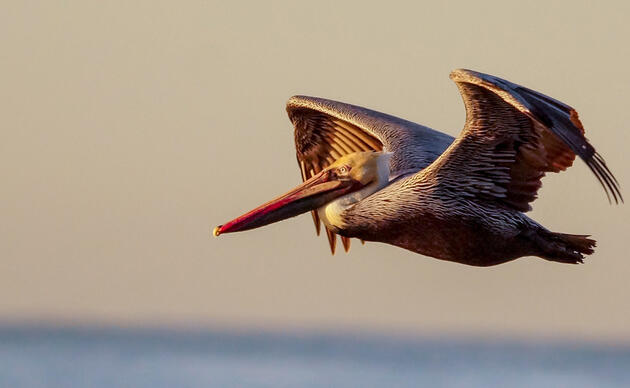As part of our celebration of South Carolina’s 3rd annual Native Plant Week, we interviewed Marcie Daniels--a longtime bird enthusiast, environmental advocate and amazing photographer among other talents-- about the picturesque habitat she and her husband have created for our feathered friends at her home in Summerville, South Carolina, and the endless challenge of perfecting their bird-friendly landscape.
Every year, Marcie and her husband Vernon set out with the intention to improve their home landscaping in a way that benefits the health and wellbeing of the world around us. Today, their yard is a stopover site for migratory birds, equipped with a full snack bar, and a safe-haven for all wildlife.

How have you approached your transition to a bird-friendly habitat?
Each year, my goal is to learn which native plants attract what wildlife, and add them to our yard. It’s definitely a work in progress, but there is progress!

What advice would you give to someone looking to attract more wildlife to their yard?
Birds and other animals don’t necessarily prefer a manicured lawn or garden, natural is best! One note I will say is this: I never use any pesticides or chemicals of any kind In fact, I cringe at the sound of a leaf blower--my biggest pet peeve! I also try not to prune plants after they have bloomed because birds depend on the seeds these plants yield.

What are your favorite native plants?
I love admiring and photographing birds and butterflies in my yard, so I’m hooked on my Stokes Aster, Ironweed and Blue Mistflower plants. They attract so much life and bring such radiant color.

What can you expect to see in your yard this time of year?
I’m very much looking forward to Fall Migration! Our Baltimore Orioles made their first appearance of the year at the end of August. The trees and bushes have been busy lately with the beautiful sounds of Red-eyed and White-eyed Vireos. This time of year, I can usually count on about 10 different species of butterflies, and as the months grow colder, the bird count will pick up. Most days there are about 20 species of birds that can easily be identified. We should start to see some American Redstarts, and my favorite, the Ruby-crowned Kinglet, will arrive in November to stay with us through the Winter.

What other factors can affect our feathered friends and our at-home habitats?
Of course, the weather plays a big part. After the hurricane Dorian, I noticed a slight decrease in bird activity due to branches and limbs torn off trees from the winds of the hurricane. This allows easier access of insects for the birds, and most prefer bugs rather than seeds in feeders.

What is the best part about converting your yard?
There is nothing more exciting than finding a new bird species in your backyard....just last year in September, I spotted a Veery! I can’t imagine a world without nature....beauty is everywhere, you just have to look!

--
We thank Marcie and Vernon for the important part they play in providing vital bird and wildlife habitat. Lest we forget why we're all celebrating South Carolina's native flora, we'll quote below from the South Carolina Native Plant Society:
For ease: Native plants properly sited and planted are hardy and adapted to normal weather extremes.
For wildlife: Native plants provide food and shelter for 10 to 15 times as many species of native wildlife as non-native plants.
For wild pollinators: Native plants support wild pollinators vital for fruit production and other foods we eat.
For water savings: Native plants normally get the moisture they need from rain, while a 1000-square-foot lawn requires 10,000 gallons of water per summer to keep it green.
For air quality: Native plants don’t require motorized equipment, while lawnmowers, string trimmers, and leaf blowers emit 10 to 34 times more hydrocarbon than a typical car.
For beauty: In a world that is becoming increasingly homogenized, native plants help us blend our land and buildings into the surrounding environment, creating a landscape that is regional, unique, and beautiful.



